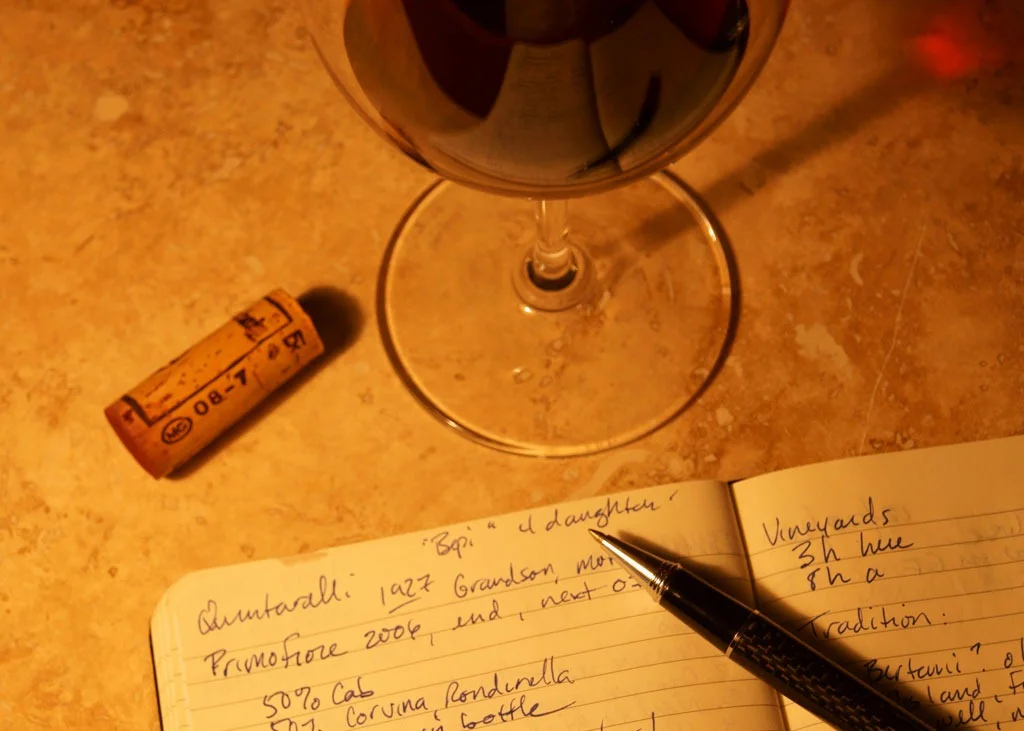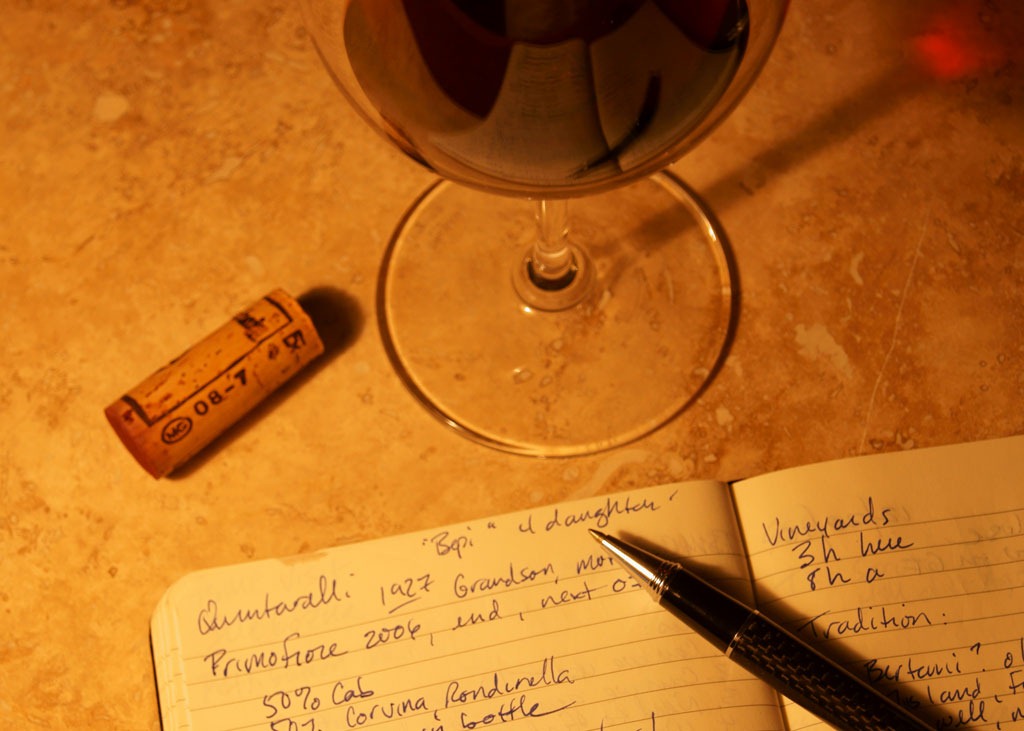Common Wine Terms
We have compiled a list of some of the more commonly used wine terms that are used when referring to and describing wine. Please feel free to comment if there is another term that you have a question about or think should be included and we will add it to the list.
AVA- or 'American Viticultural Area', is a desgnated wine-growing region within the United States.
Acidity- Malic acid and tartaric acid are naturally occurring in all grapes. In regards to winemaking, 'acidity' refers to the sour or tart flavors that are in balance or out of balance with the sweet and bitter components of a particular wine.
Appellation- The name for a geographically determined wine region.
Astringent- a term that is given to the drying effect that tannins give to the mouth, almost a 'puckering' sensation.
Barrique- The French name for a wine barrel. These barrels hold enough wine to fill about 24 standard cases (12 bottles) of wine.
Blind Tasting- A particular tasting performed whereby the taster does not know what they are drinking so that they cannot be influenced by the location, label, producer of that particular wine. There is also a 'double-blind tasting' in which neither the pourer nor the taster know what is in each glass or bottle.
Body- A general term referring to the way wine feels in the taster's mouth or to the perceived strength of a wine.
Brett- Short for Brettanomyces, this is a fungus that lives on the skins of the grape. While some believe Brett can add to the character of a wine, most believe it to be a fault. It can affect a wine through contaminated barrels or through pests that carry the fungus. The reason for the off-flavors is due to the release of acetic acid when it is in a glucose-rich environment. Some have described the flavors to be similar to wet leather, band-aids or rotten bacon.
Cepages- The French word for varietal or wine variety, i.e. cinq cepages= five varietals.
Cork taint- A term for a wine fault that causes flavors of wet dog or moldy newspapers, to name a few. Primarily caused by a compound called 2,4,6 TCA (trichloroanisole). TCA can rear its ugly head through corks that are treated with chlorine and through poor storage and transport of corks or wine. Since corks are porous, the TCA can enter the wine from the cork or through the cork.
Decanting- The mere act of taking wine from one container and placing it in another. The main benefit of doing this is to introduce more oxygen to the wine, thus changing the chemical structure of the wine and releasing its aromas and flavors.
Fermentation- merely the process by which grape juice is turned into wine.
Finish- The way a wine is perceived and the sensations it delivers after swallowing.
Fortified wine - a wine to which an additional distilled spirit, typically brandy, is added. The most common fortified wines are port, sherry and madeira.
Horizontal Tasting- A tasting of several wines from different wineries within the same vintage. These wineries are typically chosen within the same region or produce the same varietal to see how each is expressed differently in that vintage.
Late Harvest Wine- A wine that is produced from grapes that are picked much later in the harvest and have become raisined, which concentrates the sugars. This creates a wine that also has a higher sugar content and thus higher alcohol content.
Lees- The accumulation of the dead yeasts and other residual particles that are left over at the bottom after the fermentationn
Legs- The droplets that are formed and drip down the side of a glass when wine is swirled. Can indicate the amount of alcohol in a given wine where a slower drip means more alchol content than a fast drip.
Malolactic Fermentation- A technique of fermenting where the malic acid naturally within the grape is converted into lactic acid. The result is a richer, fuller wine that many people describe as having a smooth, buttery mouth feel.
Meritage- Rhyming with 'heritage', these are meant to be California's response to the red and white blends made in Bordeaux. Meritage wine use the same varietals as in France but wineries must apply to have 'Meritage' on their label.
New World- A term designated for wines that are produced outside of the traditional growing regions in Europe. These include Australia, New Zealand, Africa and North and South America. These wines are typically descried as having a more fruit-forward style.
Nose, Aroma, Bouquet- Nose is a general term describing the aromas that a wine gives off. Aromas refer to the smells attributed to the grape varietal itself such as blackberry for Cabernet Sauvignon or lemon citrus for Sauvignon Blanc. These are smells that describe a wine in its younger state. Bouquet, on the other hand, is a set of smells that are given off after a period of aging such as vanilla and honey in Chardonnay or anise in Cabernet Sauvignon.
Old World- These refer to the wine regions within Europe, most notably from France, Italy, Spain and Germany. These wines are typically made with more of a focus on earth-forward flavors.
Oxydation- Oxygen alters the chemical structure of a wine and is responsible for releasing the flavors and aromas in a wine. It is also a catalyst in the aging process and over time the wine will be less vibrant and muted. A wine that is 'oxidized' will have these characteristics.
Palate- In reference to wine, palate describes the ability to sense a variety of tastes such as 'discriminating palate'. It can also refer to a predominant flavor that is present in a wine such as a Chardonnay having a buttery palate.
Pump Over- A technique during the winemaking process which pumps grape juice from the bottom of a wine tank to the top where the skins are to promote better extraction of flavor and color and also to prevent some bacterial spoilage.
Punt- The indentation on the bottom of a wine bottle.
Reserve- A term meant to suggest that either a wine is of higher quality, by either selecting the best fruit or aging longer in bottle before selling.
Sediment- I like to refer to sediment as 'yeast poop' because it is essentially a bi-product of the yeasts in the wine 'eating' up the sugars present. What is left are small, dark granules in the wine that are completely harmless. They are more apparent in wines that are unfiltered.
Stelvin Enclosure- Otherwise known as a 'screw-top'.
Sulfite- Sulfites are most commonly used in wine as a preservative to prevent oxidation. Quite simply, wine would become vinegar without the help of sulfites.
Swirl- The act of moving the glass in a rapid circular motion to get the wine to move in the same fashion. The idea behind this is to expose more of the wine to oxygen in order to release more aromas and flavors during sensory analysis.
Tannins- Tannins are complex compounds within the grape skins, stems and seeds that give many wines an astringent, puckering effect in the mouth. Controlling tannins in a wine is an important feature in the winemaking process and can be an indicator of quality.
Tartrates- Tartaric acid is naturally occuring in the grape and can leach out of the wine and crystallize on the bottom of the bottle or cork.
Tight- Referring to a wine that has a perceptable tannic structure and thus is very astringent. A wine in this state requires some exposure to oxygen to soften the effects of the tannins and release more of the smells and tastes of the wine.
Unctuous- A wine term to describe a particular wine that possesses layers of smooth, velvety fruit.
VA (Volatile Acidity)- Volatile acidity comes from an excessive amount of acetic acid in a wine that is either released by the presence of certain bacteria in the wine or is a product of spoilage from leftover wine. Volatile acidity gives off a taste of vinegar in the wine.
Varietal- Simply the variety of grape, such as Cabernet Sauvignon or Chardonnay.
Vertical Tasting- A tasting done of multiple vintages of the same wine from the same winery. This kind of tasting is to show the variations in each vintage.
Vintage- The year in which the grapes are grown and made into wine.





